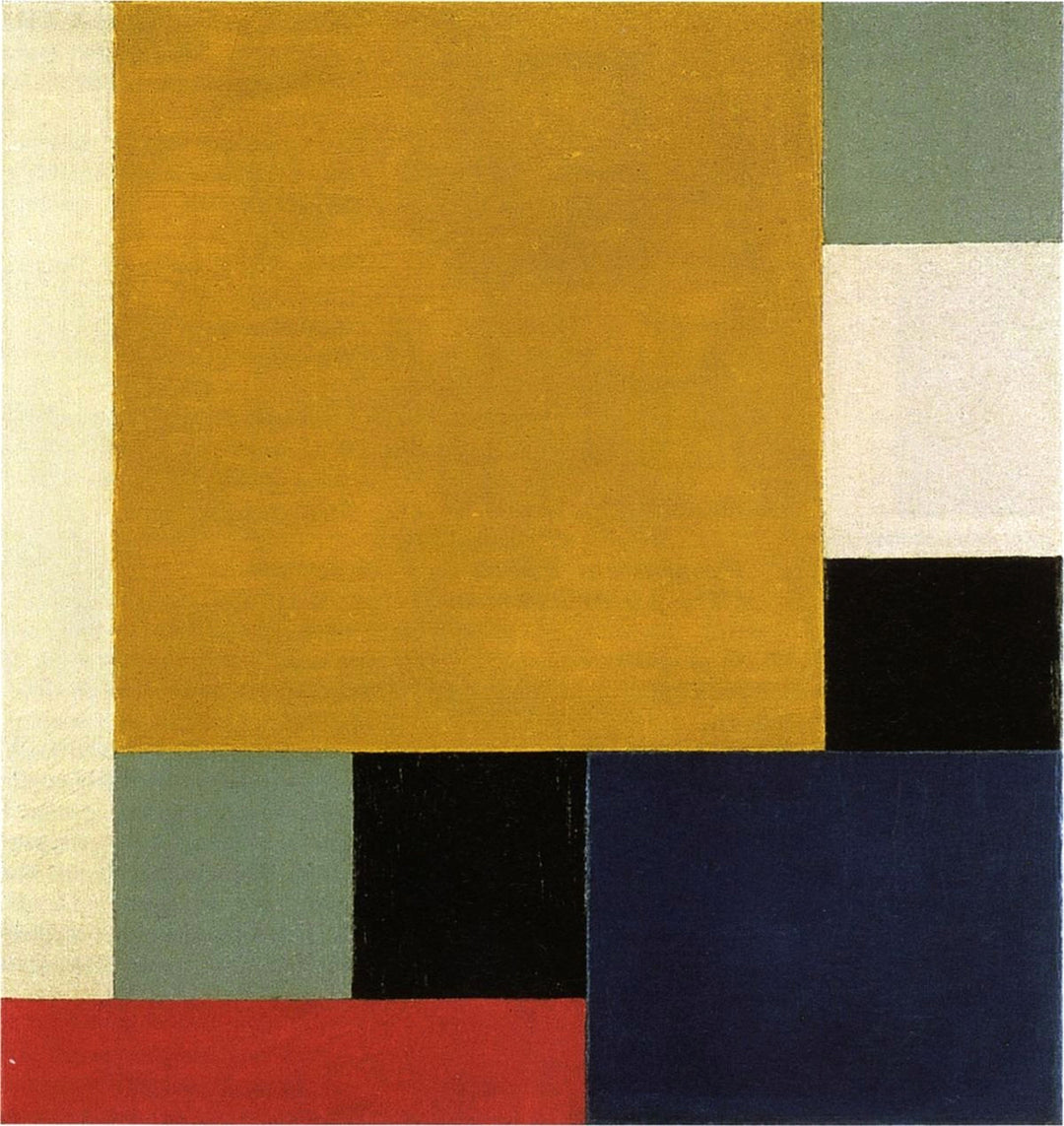
Composition XII - Theo van Doesburg
| Author: | Van Doesburg |
|---|---|
| Title: | Composition XII |
| Original location: | Van Abbemuseum, Eindhoven, Netherlands |
| Year: | 1922 |
In 1922, Theo van Doesburg painted "Composition XII," a work that challenged the notion of symmetry without losing the geometric rigor of Neoplasticism. At a time when abstract art sought to codify the visual essence of the modern world, Van Doesburg reorganized pictorial structure, shifting the balance toward a scheme of unequal weights that generates a subtle yet constant tension. Unlike Mondrian, who insisted on an even distribution of elements, here the composition plays with the accumulation of color blocks in one corner, creating a sense of contained expansion.
The canvas is structured from rectangular shapes in ochre, deep blue, red, black, white, and gray tones, with a predominance of golden yellow at the top, establishing a visual hierarchy that guides the viewer's gaze downward. While Mondrian considered primary colors essential for compositional purity, Van Doesburg introduced a greater tonal variety, paving the way for a freer language within the geometric rigor of De Stijl. This exploration anticipates his later transition toward Elementarism, where the relationship between form and dynamism would begin to take center stage.
The context of the era is essential to understanding this painting. In 1922, Europe was in a period of reconstruction after World War I, and art sought a new order that reflected rationality amidst chaos. In this sense, Theo's work is a statement of principles: stability does not mean rigidity, and balance can be achieved even in asymmetrical structures.
The impact of this work went beyond Neoplasticism, influencing the Bauhaus and architects like Gerrit Rietveld, who brought these ideas into the conception of three-dimensional space. Moreover, its compositional scheme influenced later abstraction movements such as Minimalism, where formal reduction and spatial organization continue to explore the relationship between elements within a limited visual field.